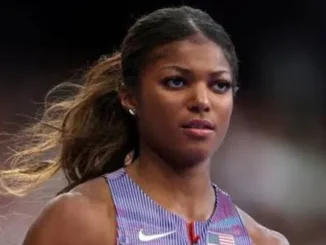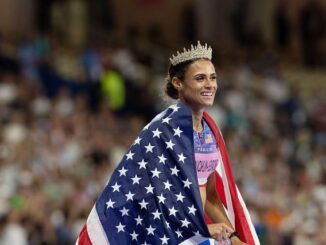
Choosing Sydney McLaughlin to close out the debut Grand Slam Track meet was an obvious move. She’s American, charismatic, and one of the most gifted athletes of her generation a three-time Olympian with four gold medals and likely more to come. Every time she hits the track, she threatens her own 400m hurdles world record.
But on Sunday, she won’t be hurdling. She’ll run the flat 400 currently her secondary event and rather than facing top 400m talents like Salwa Eid Nasser, Olympic champion Marileidy Paulino, or Gabby Thomas, she’ll compete against fellow hurdlers in a race without barriers.
Still, that matchup of elite hurdlers in a flat race is compelling the type of showdown that would draw attention at any major track event. It’s exactly the kind of marquee race the Grand Slam Track league promised, bringing together top-tier talent in a unique competitive format.
Putting McLaughlin-Levrone in the final event was both a strategic and promotional decision. Athletically, organizers spaced her events by 21 hours to maximize rest. From a marketing perspective, it gives a dominant performer with a personal best two seconds faster than anyone else a chance to shine in the meet’s final moments, broadcast in nearly 190 countries.
Whether separating her from the likes of Nasser, Paulino, and Thomas is smart or shortsighted depends on the follow-through. If this is a buildup to a mega-race later in the season, it’s a brilliant strategy. Imagine the payoff Sydney vs. Gabby vs. Marileidy vs. Salwa, all chasing the 48-second barrier.
But fans of combat sports know how often dream matchups fizzle out. If Grand Slam Track doesn’t find a way to bring the four together, this starts to feel more like missed opportunity than master plan.
Still, whatever you think of the format, there’s no denying the level of talent in Kingston this weekend. The resurfaced track will host all three Olympic 100m hurdles medalists Masai Russell, Jasmine Camacho-Quinn, and Cyréna Samba-Mayela plus men’s 100m stars like Kenny Bednarek, Fred Kerley, Zharnel Hughes, and Oblique Seville. It’s the kind of lineup that resembles a world championship final… in early April.
That’s the catch. This time of year is both thrilling and chaotic athletes are at different stages in their training, which makes assembling deep fields difficult. While Grand Slam Track hosts its meet in Jamaica, other big names are scattered: Canada’s Andre De Grasse is in Gainesville for the Florida Relays, while Sha’Carri Richardson and Julien Alfred are competing in Miramar.
For diehard fans, the scattered nature is part of the charm bouncing between streams and refreshing result pages. But Grand Slam Track is trying to streamline the experience and build anticipation earlier in the year. And that’s exciting.
Its event group format has athletes doubling up 100m runners also race 200m, 400m sprinters add the 200, and long hurdlers like McLaughlin-Levrone take on the flat 400. At its best, it creates dream matchups like Bednarek vs. Kerley vs. Hughes across both sprints.
It also brings long-debated hypotheticals to life. Can 800m world champ Marco Arop handle Cole Hocker in the 1500m? Or can Hocker match Arop’s pace in the 800m? We’re about to find out.

But in the women’s 400m landscape, the current format falls short. McLaughlin-Levrone may not be a 400m specialist, but her credentials are undeniable. Her 50.37 in the hurdles is faster than nearly all Canadian women’s flat 400 times in history. She owns a 48.74 PB and ran a 47.71 relay split in Paris one of the fastest ever.
She’s no outsider she’s a legitimate medal threat in two events and a potential history-maker in this new league. But that hinges on the format allowing the top four women to clash.
If it does, we’ll get a race for the ages. One legend will lose, but the sport and its fans will win.



Be the first to comment